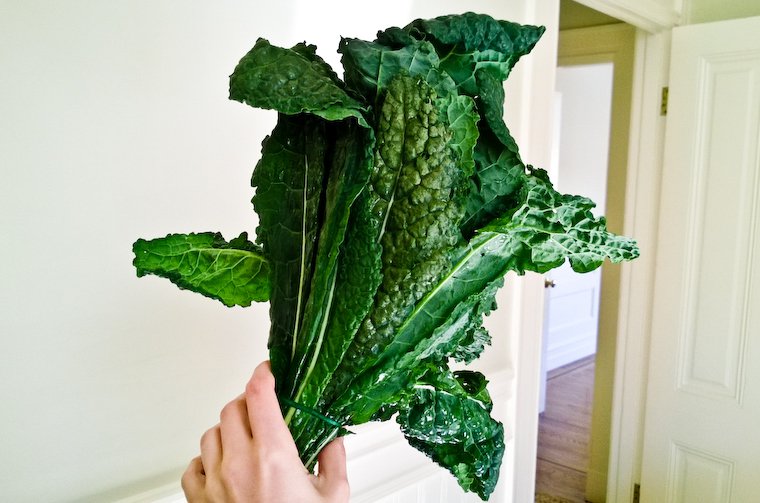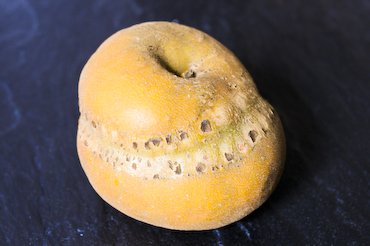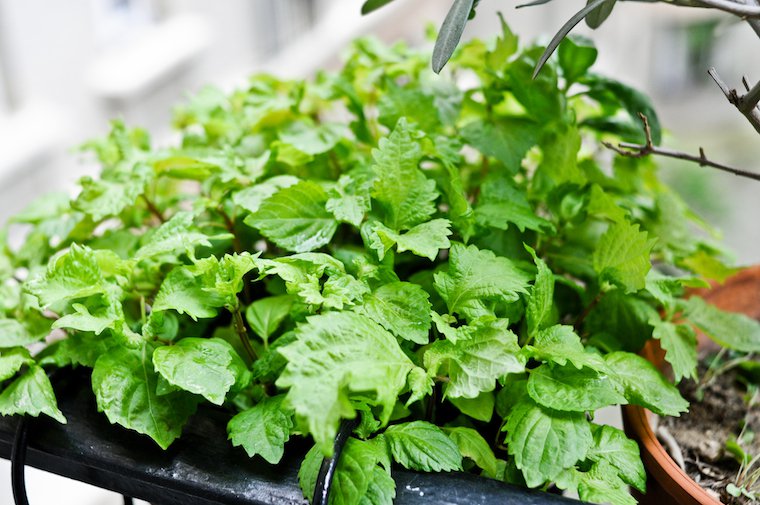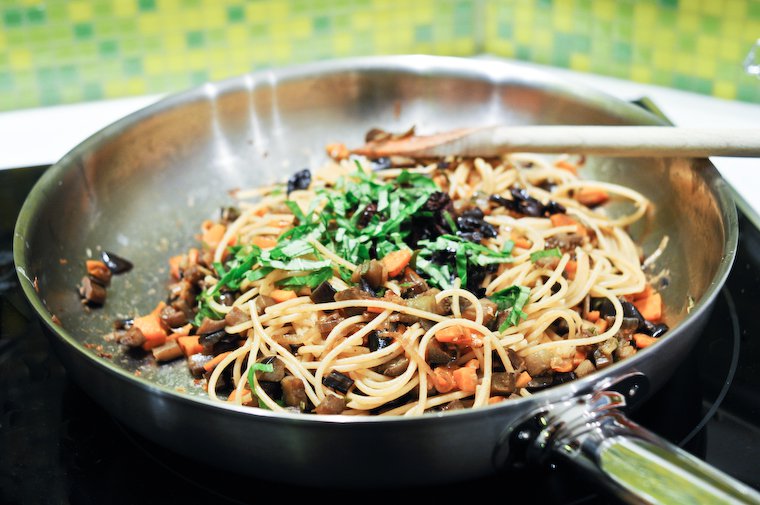Thanks to the zeitgeist and some serious lobbying from such lovely people as Kristen Beddard of The Kale Project, kale is becoming more readily available to Parisian cooks. I myself order it from a grower based in the Somme through my local Ruche qui dit oui! outpost*: it’s the curly kale variety, which he poetically calls chou plume (feather cabbage).
Last time I had the opportunity to cook with kale was a year ago, when I spent a couple of weeks in Canada, and back then I’d made a couple of kale recipes: kale chips, and multiple bowls of spelt pasta with goat’s milk ricotta and wilted kale.
But now that I can envision a bright future with lots of kale in it, I want to explore more options. So I’ve turned to Twitter to ask about your latest favorite kale recipes, and I am now collating my own research with some of your suggestions for easy reference.
I’ll note that all of these recipes can be made interchangeably with any kale variety, be it curly, purple, or (my favorite) dinosaur.
Thanks to all of you who contributed ideas, and naturally, if you have a one of your own that’s not in the list, please feel free to add it in the comments section!
* Read David Lebovitz’s post for more about La Ruche qui dit oui!











